Japan
A Journey into Cultural Riches and Natural Wonders
Japan, a captivating destination with a history spanning over 10,000 years, beckons retirees with its rich cultural heritage and breathtaking landscapes. Nestled in the heart of East Asia, this enchanting country seamlessly blends ancient traditions with modern technological marvels and promises an unforgettable travel experience. From the tranquility of Kyoto's temples to the vibrant streets of Osaka, Japan offers a myriad of destinations, each with its unique allure.
Beyond the cultural treasures, Japan's natural wonders await your discovery. Traverse the rugged beauty of Hokkaido's landscapes, where lush green forests and majestic mountains inspire a sense of wonder. Whether exploring the vibrant cherry blossoms of spring or the fiery hues of autumn, Japan's scenic splendor is unforgettable. Retirees can witness the grace and elegance of geishas, participate in traditional tea ceremonies, or indulge in the meditative art of calligraphy.
 While Japan's technological prowess is globally renowned, it is the harmonious coexistence of innovation and tradition that sets it apart. Witness the bullet trains whisking travelers across the country at astonishing speeds, or marvel at the cutting-edge robotics that offer a glimpse into the future. Yet, amidst the technological marvels, ancient shrines and timeless tea houses continue to thrive, preserving the customs that have shaped Japan's identity for centuries.
While Japan's technological prowess is globally renowned, it is the harmonious coexistence of innovation and tradition that sets it apart. Witness the bullet trains whisking travelers across the country at astonishing speeds, or marvel at the cutting-edge robotics that offer a glimpse into the future. Yet, amidst the technological marvels, ancient shrines and timeless tea houses continue to thrive, preserving the customs that have shaped Japan's identity for centuries.
There is much to see and do in Japan, here are some of the most population destinations you may wish to include in your Japan travel itinerary.
Top Destinations
Kyoto: A Stroll Through Time
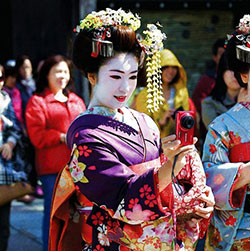 Step into Kyoto, the former capital of Japan, and be transported to a world of ancient wonders. Renowned for its rich history and vibrant culture, this captivating city invites retirees to wander through its exquisite temples and shrines. Marvel at the resplendent Golden Pavilion, Kinkaku-ji, or behold the panoramic views from Kiyomizu-dera, the Temple of Pure Water. Immerse yourself in the enchanting Arashiyama Bamboo Grove and witness the timeless allure of geishas in the historic Gion district. With its UNESCO World Heritage sites and traditional charm, Kyoto captures the essence of Japan's cultural legacy. Step into Kyoto, the former capital of Japan, and be transported to a world of ancient wonders. Renowned for its rich history and vibrant culture, this captivating city invites retirees to wander through its exquisite temples and shrines. Marvel at the resplendent Golden Pavilion, Kinkaku-ji, or behold the panoramic views from Kiyomizu-dera, the Temple of Pure Water. Immerse yourself in the enchanting Arashiyama Bamboo Grove and witness the timeless allure of geishas in the historic Gion district. With its UNESCO World Heritage sites and traditional charm, Kyoto captures the essence of Japan's cultural legacy.
Hakone: Nature's Splendor and Serenity
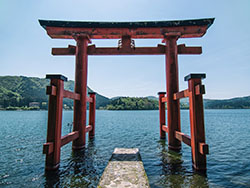 Nestled in the Hakone caldera, formed by an eruption of Mount Fuji over 3,000 years ago, lies the picturesque town of Hakone. Renowned for its natural beauty, it offers retirees a serene escape from the bustling city life. Indulge in rejuvenating hot springs, embark on scenic boat rides across Lake Ashi, and savor breathtaking vistas of Mount Fuji. Hakone is a true haven for nature enthusiasts and seekers of tranquility, providing an idyllic retreat amidst Japan's stunning landscapes. Nestled in the Hakone caldera, formed by an eruption of Mount Fuji over 3,000 years ago, lies the picturesque town of Hakone. Renowned for its natural beauty, it offers retirees a serene escape from the bustling city life. Indulge in rejuvenating hot springs, embark on scenic boat rides across Lake Ashi, and savor breathtaking vistas of Mount Fuji. Hakone is a true haven for nature enthusiasts and seekers of tranquility, providing an idyllic retreat amidst Japan's stunning landscapes.
Hiroshima Peace Memorial Park
 Hiroshima Peace Memorial Park stands as a poignant reminder of the devastating impact of war. Built on the grounds where the atomic bomb ravaged the city in 1945, this park commemorates the lives lost and advocates for peace. Retirees visiting Hiroshima can traverse wheelchair-accessible paths, explore thought-provoking exhibits, and pay their respects at the iconic Atomic Bomb Dome. This solemn and contemplative destination serves as a reminder of the resilience of the human spirit and the importance of fostering global harmony. Hiroshima Peace Memorial Park stands as a poignant reminder of the devastating impact of war. Built on the grounds where the atomic bomb ravaged the city in 1945, this park commemorates the lives lost and advocates for peace. Retirees visiting Hiroshima can traverse wheelchair-accessible paths, explore thought-provoking exhibits, and pay their respects at the iconic Atomic Bomb Dome. This solemn and contemplative destination serves as a reminder of the resilience of the human spirit and the importance of fostering global harmony.
Hokkaido: Nature's Playground
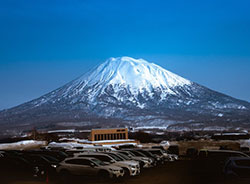 Adorned with natural wonders, Hokkaido, the northernmost island of Japan, offers retirees an idyllic playground for exploration. Delight in the grandeur of Mount Fuji, relax by the serene shores of Lake Toya, or venture into the untamed wilderness of Shiretoko National Park. Hokkaido's picturesque landscapes provide the perfect backdrop for hiking, skiing, and immersing oneself in the beauty of nature. Embark on an unforgettable journey through this captivating island and discover the untamed allure of Japan's northern gem. Adorned with natural wonders, Hokkaido, the northernmost island of Japan, offers retirees an idyllic playground for exploration. Delight in the grandeur of Mount Fuji, relax by the serene shores of Lake Toya, or venture into the untamed wilderness of Shiretoko National Park. Hokkaido's picturesque landscapes provide the perfect backdrop for hiking, skiing, and immersing oneself in the beauty of nature. Embark on an unforgettable journey through this captivating island and discover the untamed allure of Japan's northern gem.
Kanazawa: A Glimpse into Japan's Cultural Heritage
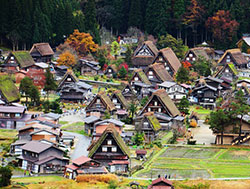 The city of Kanazawa, nestled in the Hokuriku region, unveils Japan's cultural heritage with its traditional charm and architectural wonders. Retirees can explore the famed Kenroku-en Garden, one of the three most beautiful gardens in Japan, and witness its breathtaking landscapes that change with the seasons. Stroll through the well-preserved Higashi Chaya District, renowned for its teahouses and geisha culture, or visit the samurai district of Nagamachi to immerse yourself in the history of the samurai warriors. Kanazawa offers a glimpse into the elegance and grace of traditional Japan. The city of Kanazawa, nestled in the Hokuriku region, unveils Japan's cultural heritage with its traditional charm and architectural wonders. Retirees can explore the famed Kenroku-en Garden, one of the three most beautiful gardens in Japan, and witness its breathtaking landscapes that change with the seasons. Stroll through the well-preserved Higashi Chaya District, renowned for its teahouses and geisha culture, or visit the samurai district of Nagamachi to immerse yourself in the history of the samurai warriors. Kanazawa offers a glimpse into the elegance and grace of traditional Japan.
Kagoshima: A Volcanic Oasis
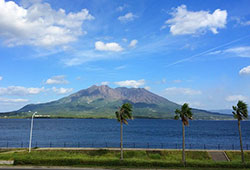 Located on the southern tip of Kyushu Island, Kagoshima is a city teeming with natural beauty and culinary delights. The towering presence of Mount Sakurajima, an active volcano, adds a unique charm to the city's landscape. Retirees can savor the delectable local cuisine, relax in wheelchair-accessible restaurants, and witness the stunning views from Shiroyama Park. Kagoshima offers a delightful fusion of nature, history, and gastronomy, creating an unforgettable experience for every traveler. Located on the southern tip of Kyushu Island, Kagoshima is a city teeming with natural beauty and culinary delights. The towering presence of Mount Sakurajima, an active volcano, adds a unique charm to the city's landscape. Retirees can savor the delectable local cuisine, relax in wheelchair-accessible restaurants, and witness the stunning views from Shiroyama Park. Kagoshima offers a delightful fusion of nature, history, and gastronomy, creating an unforgettable experience for every traveler.
Kyushu: Soak in Onsen Bliss
 Kyushu, the southernmost of Japan's main islands, entices retirees with its soothing hot springs and warm hospitality.The island features numerous onsens where visitors can immerse themselves in therapeutic waters. Kyushu is also renowned for its diverse culinary delights, including fresh seafood and regional specialties. The island's rich history is evident through ancient castles, shrines, and cultural festivals, offering ample opportunities for exploration and discovery. Additionally, Kyushu is characterized by its breathtaking natural landscapes, which include volcanoes, coastlines, and mountains. Kyushu, the southernmost of Japan's main islands, entices retirees with its soothing hot springs and warm hospitality.The island features numerous onsens where visitors can immerse themselves in therapeutic waters. Kyushu is also renowned for its diverse culinary delights, including fresh seafood and regional specialties. The island's rich history is evident through ancient castles, shrines, and cultural festivals, offering ample opportunities for exploration and discovery. Additionally, Kyushu is characterized by its breathtaking natural landscapes, which include volcanoes, coastlines, and mountains.
Mount Fuji: Majestic Splendor
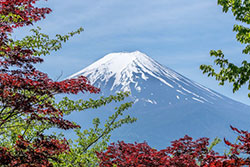 No visit to Japan is complete without beholding the majestic beauty of Mount Fuji. This iconic mountain stands tall as a symbol of Japan and offers retirees a chance to witness its awe-inspiring grandeur. Hiking enthusiasts can embark on an adventure to conquer its summit, while others can appreciate its magnificence from a distance or capture its splendor through photography. Mount Fuji is a testament to the natural wonders that await in this captivating country. No visit to Japan is complete without beholding the majestic beauty of Mount Fuji. This iconic mountain stands tall as a symbol of Japan and offers retirees a chance to witness its awe-inspiring grandeur. Hiking enthusiasts can embark on an adventure to conquer its summit, while others can appreciate its magnificence from a distance or capture its splendor through photography. Mount Fuji is a testament to the natural wonders that await in this captivating country.
Nara: Encounter the Divine and the Deer
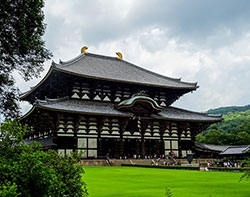 Nestled on the Nara, a city steeped in tradition, captivates retirees with its spiritual essence and friendly inhabitants. Visit Nara Park, where over 1,200 deer roam freely, creating an enchanting atmosphere. Explore Todai-ji Temple, a UNESCO World Heritage Site and home to the Great Buddha, an awe-inspiring statue that leaves a lasting impression. Immerse yourself in the tranquility of Kasuga Taisha Shrine and witness the ethereal beauty of its lantern-lined pathways. Nara offers a harmonious blend of nature, spirituality, and cultural heritage. Nestled on the Nara, a city steeped in tradition, captivates retirees with its spiritual essence and friendly inhabitants. Visit Nara Park, where over 1,200 deer roam freely, creating an enchanting atmosphere. Explore Todai-ji Temple, a UNESCO World Heritage Site and home to the Great Buddha, an awe-inspiring statue that leaves a lasting impression. Immerse yourself in the tranquility of Kasuga Taisha Shrine and witness the ethereal beauty of its lantern-lined pathways. Nara offers a harmonious blend of nature, spirituality, and cultural heritage.
Okinawa: Subtropical Paradise
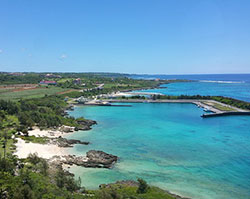 For those seeking sun-kissed beaches and a laid-back atmosphere, Okinawa presents a subtropical paradise unlike any other. This captivating island chain boasts crystal-clear waters, vibrant coral reefs, and a unique Ryukyuan culture. Retirees can relax in wheelchair-accessible resorts, explore the historic Shuri Castle, and delve into the island's rich history at the Okinawa Prefectural Peace Memorial Museum. Okinawa offers a rejuvenating retreat where natural beauty and cultural heritage converge. For those seeking sun-kissed beaches and a laid-back atmosphere, Okinawa presents a subtropical paradise unlike any other. This captivating island chain boasts crystal-clear waters, vibrant coral reefs, and a unique Ryukyuan culture. Retirees can relax in wheelchair-accessible resorts, explore the historic Shuri Castle, and delve into the island's rich history at the Okinawa Prefectural Peace Memorial Museum. Okinawa offers a rejuvenating retreat where natural beauty and cultural heritage converge.
Osaka: Gastronomic Delights and Festive Spirit
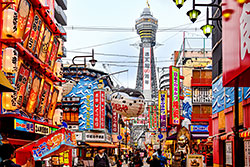 Osaka, a dynamic metropolis, is a culinary haven that beckons retirees with its mouthwatering delicacies and vibrant atmosphere. Savor the flavors of local street food, indulge in traditional okonomiyaki and takoyaki, and immerse yourself in the bustling atmosphere of the iconic Dotonbori district. Osaka's friendly locals, renowned for their warm hospitality, add a welcoming touch to this vibrant city. Embrace the festive spirit, discover historical landmarks, and let Osaka's infectious energy sweep you off your feet. Osaka, a dynamic metropolis, is a culinary haven that beckons retirees with its mouthwatering delicacies and vibrant atmosphere. Savor the flavors of local street food, indulge in traditional okonomiyaki and takoyaki, and immerse yourself in the bustling atmosphere of the iconic Dotonbori district. Osaka's friendly locals, renowned for their warm hospitality, add a welcoming touch to this vibrant city. Embrace the festive spirit, discover historical landmarks, and let Osaka's infectious energy sweep you off your feet.
Shikoku: A Serene Pilgrimage
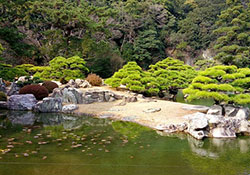 Shikoku, the smallest of Japan's four main islands, offers retirees a serene pilgrimage to the heart of Japanese Buddhism. Explore the famed 88 Temple Pilgrimage, a sacred route dotted with beautiful temples and breathtaking landscapes. Retirees can visit wheelchair-accessible temples, such as the picturesque Ryozenji and the serene Kōchi Castle. Shikoku's tranquil ambiance and spiritual heritage provide a peaceful retreat for contemplation and introspection. Shikoku, the smallest of Japan's four main islands, offers retirees a serene pilgrimage to the heart of Japanese Buddhism. Explore the famed 88 Temple Pilgrimage, a sacred route dotted with beautiful temples and breathtaking landscapes. Retirees can visit wheelchair-accessible temples, such as the picturesque Ryozenji and the serene Kōchi Castle. Shikoku's tranquil ambiance and spiritual heritage provide a peaceful retreat for contemplation and introspection.
Tokyo: The Dynamic Capital
 At the heart of Japan's bustling energy lies Tokyo, a sprawling metropolis that seamlessly blends tradition and innovation. Retirees can embark on a sensory journey through this vibrant city, from the neon-lit streets of Shinjuku to the tranquility of Asakusa's ancient temples. Immerse yourself in the futuristic districts of Shibuya and Akihabara, where cutting-edge technology and modern trends converge. Tokyo's diverse attractions, world-class shopping, and culinary delights ensure an immersive experience that reflects the dynamism of contemporary Japan. At the heart of Japan's bustling energy lies Tokyo, a sprawling metropolis that seamlessly blends tradition and innovation. Retirees can embark on a sensory journey through this vibrant city, from the neon-lit streets of Shinjuku to the tranquility of Asakusa's ancient temples. Immerse yourself in the futuristic districts of Shibuya and Akihabara, where cutting-edge technology and modern trends converge. Tokyo's diverse attractions, world-class shopping, and culinary delights ensure an immersive experience that reflects the dynamism of contemporary Japan.
A journey to Japan is an opportunity to unravel the layers of its intricate culture and embrace a way of life that celebrates both tradition and progress. It is a chance to witness the legacy of centuries, to stroll through lush gardens and contemplate the tranquility of ancient temples, and to be embraced by the warmth and humility of the Japanese people. Let Japan ignite your senses, broaden your horizons, and leave an indelible mark on your soul as you unravel the essence of a nation that cherishes its roots while soaring toward the future.
Best Time to Visit:
Determining the best time to visit Japan depends on your preferences and the experiences you seek. Japan offers distinct seasons, each with its own unique charm. Keep in mind that peak travel times, such as during cherry blossom season (Spring) or Golden Week (late April to early May), can be crowded, so it's advisable to book accommodations and transportation well in advance.
- Spring (March to May): Spring is renowned for the mesmerizing cherry blossoms (sakura) that blanket the country. This is a magical time to visit, especially in late March to early April, when the cherry blossoms are in full bloom.
- Summer (June to August): Summers in Japan are hot and humid, with occasional rain showers. The hottest months in Japan are July and August, when temperatures can reach up to 95 degrees Fahrenheit (35 degrees Celsius). This season offers vibrant festivals, lively fireworks displays, and opportunities to explore the beautiful coastal regions.
- Autumn (September to November): Autumn is a favorite time for many visitors due to the stunning foliage, known as "koyo." The landscapes transform into a vivid tapestry of red, orange, and gold hues, particularly in October and November.
- Winter (December to February): Winter in Japan brings a certain enchantment, especially in regions like Hokkaido, where you can enjoy winter sports, snow festivals, and relaxing hot springs.
Travel Planning Tips:
-
Research and Plan Ahead: Japan offers a wide range of attractions and activities. Research popular destinations, cultural events, and local customs to create an itinerary that suits your interests.Consider booking accommodations, transportation, and attraction tickets in advance, especially during peak travel seasons.
- Duration of Stay: Japan has a lot to offer, so plan your trip accordingly. A week to 10 days is a good starting point to explore the major cities and some regional highlights.
- Cultural Etiquette: Familiarize yourself with Japanese customs and etiquette to show respect for local traditions. Learn basic Japanese phrases, such as greetings and polite expressions, as it can greatly enhance your interactions with locals.
- Local Cuisine: Japanese cuisine is renowned worldwide. Try traditional dishes like sushi, ramen, tempura, and local specialties in each region you visit. Be open to exploring local food markets, izakayas (Japanese pubs), and street food stalls for an authentic culinary experience.
- Cash vs. Cards: While major credit cards are widely accepted in cities, it's advisable to carry cash, especially when visiting smaller establishments, local markets, or rural areas. ATMs can be found at convenience stores and post offices, which often accept international cards.
- Stay Connected: Consider renting a pocket Wi-Fi device or getting a SIM card to stay connected to the internet throughout your trip. This will help with navigation, translation, and accessing useful travel apps.
- Travel Insurance: It's recommended to have travel insurance that covers medical emergencies, trip cancellation, and lost or stolen belongings. Ensure that your insurance policy provides adequate coverage for your trip to Japan.
Transportation:
- Domestic Flights: If you plan to visit distant islands or cover longer distances quickly, domestic flights are an option. Japan has several domestic airlines that operate flights between major cities and regional airports.
- Trains:Japan's extensive railway network is known for its punctuality and convenience. The Japan Railways (JR) operates the Shinkansen (bullet train) system, connecting major cities like Tokyo, Osaka, Kyoto, and Hiroshima. The JR Pass offers unlimited travel on JR lines for foreign tourists and can be a cost-effective option for long-distance travel.
- Buses: Buses are another common mode of transportation, especially for traveling to areas with limited train access or for short trips within cities. Long-distance highway buses connect different regions of the country and can be a budget-friendly option for intercity travel.
- Taxis: Taxis are widely available but can be relatively expensive compared to other transportation options. They are a convenient choice for short distances, especially when traveling with luggage or during late-night hours when public transportation is less frequent.
- Subways and Local Trains: Major cities like Tokyo, Osaka, and Kyoto have comprehensive subway and local train systems. These networks provide easy access to various attractions within the cities and neighboring areas. Purchasing an IC card (e.g., Suica, Pasmo) allows for convenient fare payment across different subway and train lines.
- Rental Cars: Renting a car can be advantageous for exploring rural or remote areas with limited public transportation. However, keep in mind that Japan has a different driving system (left-hand side) and strict traffic rules. International driving permits are required for non-Japanese drivers.
- Bicycles: In some cities and smaller towns, bicycles can be a convenient and eco-friendly way to get around. Many cities offer bicycle rental services, allowing you to explore at your own pace.
- Walking: Japan is a pedestrian-friendly country, and walking is a great way to explore local neighborhoods and attractions, especially in compact city centers.
Safety Tips:
Japan is generally considered a safe country to visit, but it's always good to exercise caution and be aware of your surroundings. Here are some safety tips to keep in mind during your trip:
- Emergency Services: Familiarize yourself with emergency contact numbers in Japan, such as 110 for the police and 119 for medical emergencies. Operators at these numbers usually speak limited English, so it's helpful to have a translation app or phrasebook available.
- Personal Belongings: Japan has a low crime rate, but it's still important to take precautions with your belongings. Keep an eye on your bags and valuables, especially in crowded areas and public transportation. Use hotel safes to store your passports and other important documents securely.
- Natural Disasters: Japan is prone to natural disasters like earthquakes, typhoons, and volcanic eruptions. Stay informed about weather conditions and follow any advisories or evacuation instructions issued by local authorities. Familiarize yourself with emergency procedures at your accommodation.
- Traffic Safety: If you plan on renting a car or using bicycles, familiarize yourself with local traffic rules and regulations. Pedestrians should always use designated crosswalks and be mindful of traffic signals. Look both ways when crossing streets, as traffic flows on the left side of the road in Japan.
- Health and Hygiene: Japan maintains high standards of cleanliness and hygiene. However, it's still important to maintain good personal hygiene practices. Wash your hands frequently, especially before meals, and carry hand sanitizer. Stay hydrated and protect yourself from extreme weather conditions.
- Drinking and Nightlife: If you choose to enjoy Japan's nightlife, do so responsibly. Be cautious of overconsumption of alcohol and ensure you have a reliable means of transportation back to your accommodation. It's advisable to stay in well-lit and populated areas, especially if you're unfamiliar with the surroundings.
- Language Barrier: English is not widely spoken in all areas of Japan, so consider carrying a pocket-sized phrasebook or a translation app to help with basic communication. Learning a few essential phrases in Japanese can also go a long way in navigating everyday situations.
- Travel Advisories Stay updated on current events, local regulations, and any travel advisories when traveling abroad. Visit the US Government State Department Travel Advisories web site to check on the status of your destination.
- Enroll in the STEP Program: Travelers are also urged to enroll in the U.S. State Department's Smart Traveler Enrollment Program (STEP) to receive security messages and to make it easier to locate them in an emergency. The Department uses these security messages to convey information about terrorist threats, security incidents, planned demonstrations, natural disasters, etc. In an emergency, please contact the nearest U.S. Embassy or consulate or call the following numbers: 1 (888) 407-4747 (toll-free in the United States and Canada) or 1 (202) 501-4444 from other countries.
Remember, these are general safety tips, and specific safety considerations may vary depending on your destination within Japan. Stay informed, use common sense, and enjoy your trip while prioritizing your well-being and safety.
| |
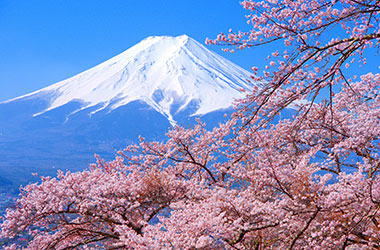 Mt.Fuji from Fujimi Kotoku Park, Fujiyoshida
Photo by Atsushi Gando/istock
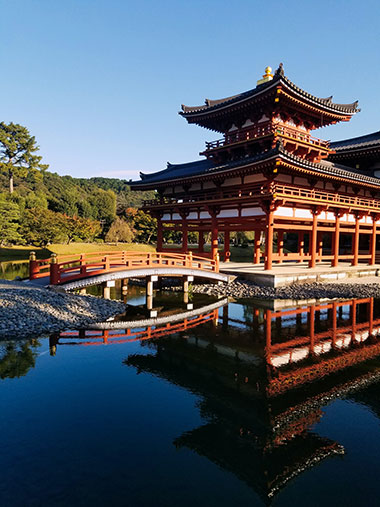 Byd-in Buddhist Temple, Uji, Kyoto
Photo by Ian Ramírez
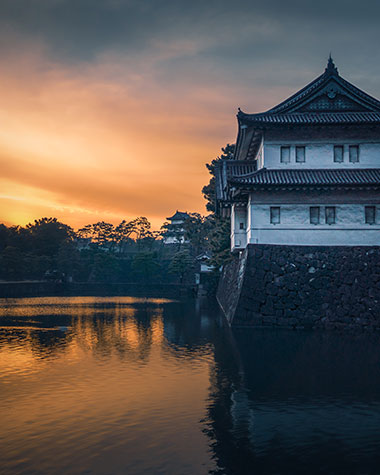 Tokyo Imperial Palace
Photo by Pierre Blaché
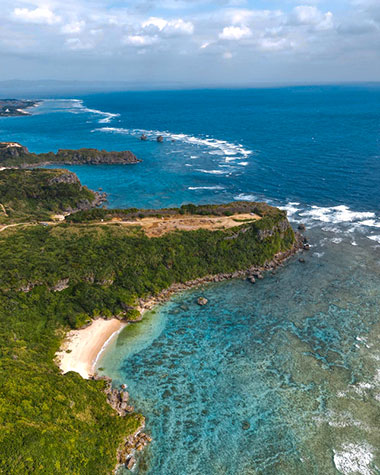 Okinawa island
Photo by Spacy Goody
|
 Step into Kyoto, the former capital of Japan, and be transported to a world of ancient wonders. Renowned for its rich history and vibrant culture, this captivating city invites retirees to wander through its exquisite temples and shrines. Marvel at the resplendent Golden Pavilion, Kinkaku-ji, or behold the panoramic views from Kiyomizu-dera, the Temple of Pure Water. Immerse yourself in the enchanting Arashiyama Bamboo Grove and witness the timeless allure of geishas in the historic Gion district. With its UNESCO World Heritage sites and traditional charm, Kyoto captures the essence of Japan's cultural legacy.
Step into Kyoto, the former capital of Japan, and be transported to a world of ancient wonders. Renowned for its rich history and vibrant culture, this captivating city invites retirees to wander through its exquisite temples and shrines. Marvel at the resplendent Golden Pavilion, Kinkaku-ji, or behold the panoramic views from Kiyomizu-dera, the Temple of Pure Water. Immerse yourself in the enchanting Arashiyama Bamboo Grove and witness the timeless allure of geishas in the historic Gion district. With its UNESCO World Heritage sites and traditional charm, Kyoto captures the essence of Japan's cultural legacy.
 Mt.Fuji from Fujimi Kotoku Park, Fujiyoshida
Mt.Fuji from Fujimi Kotoku Park, Fujiyoshida Byd-in Buddhist Temple, Uji, Kyoto
Byd-in Buddhist Temple, Uji, Kyoto Tokyo Imperial Palace
Tokyo Imperial Palace Okinawa island
Okinawa island  While Japan's technological prowess is globally renowned, it is the harmonious coexistence of innovation and tradition that sets it apart. Witness the bullet trains whisking travelers across the country at astonishing speeds, or marvel at the cutting-edge robotics that offer a glimpse into the future. Yet, amidst the technological marvels, ancient shrines and timeless tea houses continue to thrive, preserving the customs that have shaped Japan's identity for centuries.
While Japan's technological prowess is globally renowned, it is the harmonious coexistence of innovation and tradition that sets it apart. Witness the bullet trains whisking travelers across the country at astonishing speeds, or marvel at the cutting-edge robotics that offer a glimpse into the future. Yet, amidst the technological marvels, ancient shrines and timeless tea houses continue to thrive, preserving the customs that have shaped Japan's identity for centuries.